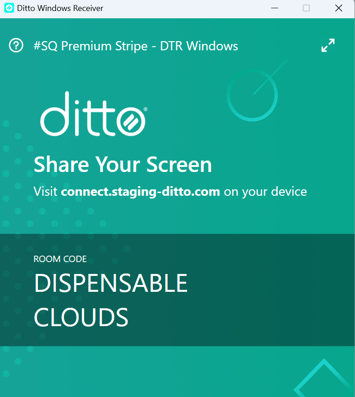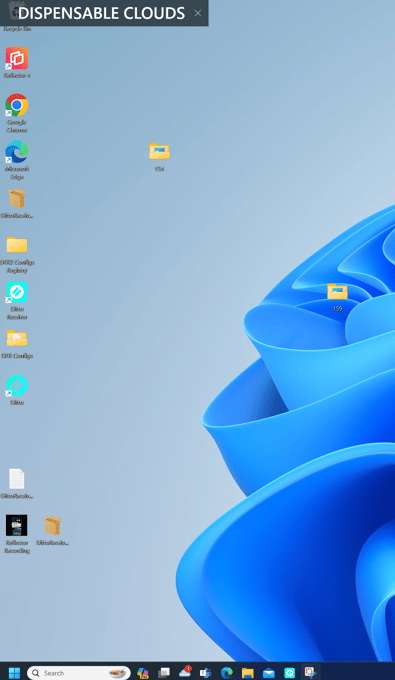Using Low-Profile Mode for Ditto Windows Receivers
Low-profile mode gives you the ability to use your Windows receivers for other tasks while still showing the Ditto room code
Note: Low-profile mode is only available for Ditto Windows Receiver
Using low-profile mode on the Ditto Windows Receiver keeps room codes visible in a low-profile box when the receiver app is minimized. The receiver app will take up less space on your Windows device while users retain the ability to see the room code that's required to begin screen sharing. The low-profile receiver box can be moved to any area on the desktop.
There are three low-profile mode settings located in the Customization section of the Ditto Account portal. You can follow the path: My Organization > Customization > Organizational Settings in the Ditto Account Portal:
.png?width=688&height=487&name=Screenshot%202023-12-13%20140041%20(1).png)
- Disabled - turns off low-profile mode for Ditto Windows Receivers. When low-profile mode is disabled, you can only display the Ditto room code in windowed mode or full screen on the PC desktop.
- Enabled - allows the Ditto room code to be displayed on the desktop in any of the three available options: Full-screen mode, Windowed mode or Low-profile mode.
- Launch - selecting this will set low-profile mode as the default when launching the Ditto Windows Receiver application on the PC.
.png?width=688&height=234&name=Screenshot%202023-12-13%20140041%20(3).png)
Three options to display your Ditto room code on a Ditto Windows Receiver:
Full-screen mode:
The Ditto Windows Receiver application takes up the entire screen. The picture below shows the receiver running digital signage (the patterned image) along with the screen sharing connection information.

Windowed mode:
The Ditto Windows Receiver app is confined to a window.

Low-profile mode:
The Ditto Windows Receiver app is minimized while still showing the room code, and the Windows desktop is showing.

